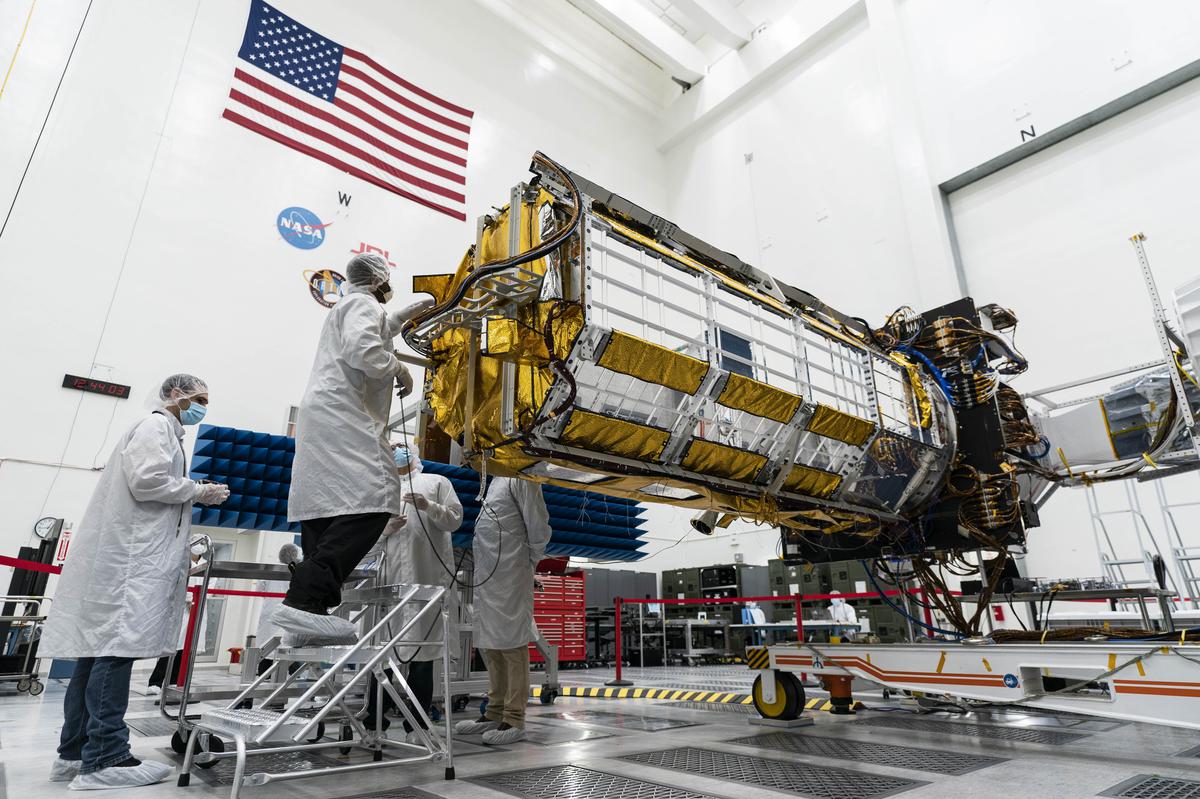Live Classes

India and the United States agreeing to advance space collaboration in several areas, under the ‘initiative on critical and emerging technology’(ICET) umbrella, including human space exploration and commercial space partnership, comes at a crucial time for both countries. This follows from the eighth meeting of the U.S.India Civil Space Joint Working Group (CSJWG), that was held on January 3031, 2023.
Promotion of space research and mutual cooperation
In November 2022, the U.S. kicked off its Artemis programme by launching the Orion spacecraft towards the moon and bringing it safely back to earth. India itself is set to embark on its first human spaceflight mission (Gaganyaan) in 2024. The two countries have also taken significant strides in advancing the private space sector. Together, these endeavours will shape and impact U.S. and Indian space policies and programmes over the next decade. In this context, a U.S.India collaboration seems straightforward.
India could secure technologies and expertise by collaborating with an advanced spacefaring nation; the U.S. could strengthen its relationship with India on a matter that seems less controversial than others. But it is not straightforward: certain structural factors limit the extent to which the U.S. and India can collaborate in the short term. This is why IndiaU.S. cooperation can advance at a measured pace, to enable sustainable longterm civilian and military space partnerships.
India-US: A mismatch in interests and capabilities
The first structural factor that limits longterm IndiaU.S. space cooperation is the mismatch in the two nations’ interests in outer space. The U.S. has committed to returning to the moon — and this time to stay there for the long term. Although the U.S. and its partners stress the importance of maintaining capabilities in low earth orbit, their ambitions are firmly set on the moon.
In this regard, the Artemis Program, the Artemis Accords, and the Biden administration’s National Cislunar Science & Technology Strategy constitute the foundation for American ambitions beyond earth orbits. Meanwhile, India’s scientific community focuses on building the nation’s capability in and under earth orbits.
The Indian Space Research Organisation (ISRO) currently undertakes fewer than 10 launches each year. The Gaganyaan human spaceflight programme hopes to sustain India’s human presence in space for the long term. This is not to say that India does not aim for the moon, Mars or beyond. But India’s top priority is to substantially increase its satellite and launch capabilities in earth orbits and catch up with other spacefaring nations such as China.
The asymmetry in capabilities is the second structural factor limiting India-U.S. space cooperation. The U.S. has the highest number of registered satellites in space. It also has a range of launch vehicles serving both commercial and national security needs. Private entity SpaceX, for example, managed to achieve a record 61 launches in 2022, far higher than the number of launches undertaken by any other commercial entity or country. The American private sector has also assumed the challenge of replacing the International Space Station by 2030 with many smaller stations.
The greatest challenge for India here is lack of capacity. The country has just over 60 satellites in orbit and cannot undertake double digit launches annually. The Indian government also opened the space industry to the private sector only in 2020. Since the U.S. already has an extensive network of partners for space cooperation, it has few technical incentives to cooperate with India. Compounding these problems are disagreements on how best to govern space activities on the moon and other celestial bodies. Even though countries have a mindset to collaborate, the structural factors overpower diplomatic incentives to pursue long term cooperation.
Way Ahead: Some novel solutions
The standard solution to induce long term cooperation is to sustain the engagement between academics, the private sector and stateled entities in the two countries. Sustained engagement could also take the form of collaborating on highly specialised projects such as the NASA-ISRO Synthetic Aperture Radar (NISAR) mission. But these solutions are slow and not entirely suited for the new space age, where diplomacy struggles to keep up with the rate of technological innovation.
So, India and the U.S. must find novel solutions to cooperate in the new space age to achieve a meaningful partnership. One form of cooperation is a partnership between state and private entities; or, as agreed in the most recent meeting, a convention of American and Indian aerospace companies to advance collaboration under the National Aeronautics and Space Administration’s (NASA) Commercial Lunar Payload Services (CLPS) programme. Such an arrangement could be taken further. India could send its astronauts to train at American private companies. This could help India reduce its dependence on Russia while ISRO builds its own astronaut training centre.
Another novel arrangement could be a consortium led by the government owned NewSpace India Limited which involves private companies in the U.S. This setup could accelerate India’s human spaceflight programme and give the U.S. an opportunity to accommodate Indian interests in earth orbits.
NISAR observatory